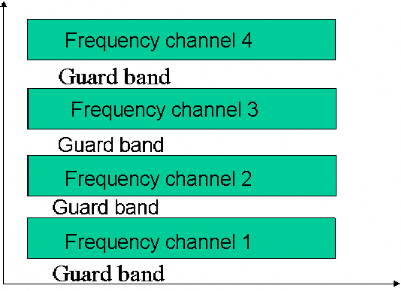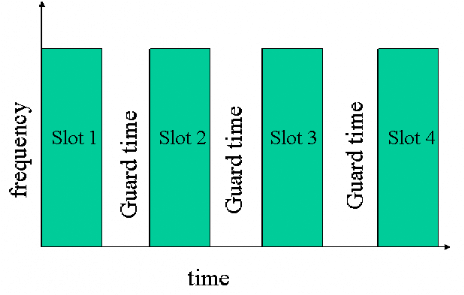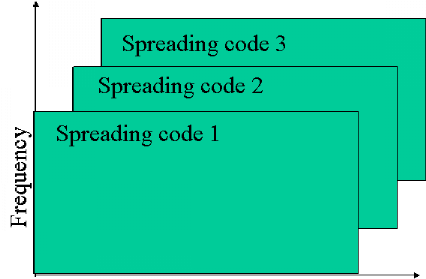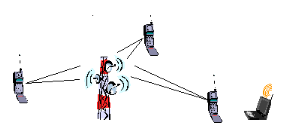CHAP 4 Multiple
Access Schemes
4.1 Introduction
The Multiple Access Scheme defines how the radio frequency can
be shared by different simultaneous communication between different mobile
stations located in different cells [29]. The distribution of spectrum is
required to achieve this high system capacity by simultaneously allocating the
available bandwidth (or available amount of channels) to multiple users. In
this chapter, we discuss four access schemes used to share the available
bandwidth in a wireless communication. Nonetheless, they are known as the
frequency division multiple access (FDMA), time division multiple access
(TDMA), code division multiple access (CDMA) and Space division multiple access
(SDMA). As a result, there is a lot to debate about which schemes is better to
use in smart antennas systems. However, as it is reported in [30], the answer
to this depends on the combined techniques, such as the modulation scheme,
anti-fading techniques, forward error correction, and so on, as well as the
requirements of services, such as the coverage area, capacity, traffic, and
types of information.
4.2 Frequency Division Multiple Access (FDMA)
In FDMA, the bandwidth of the available spectrum is divided
into separate channels, each individual channel frequency being allocated to a
different user for transmission [28]. When a user sends a call request, the
system will assign one of the available channels to the user, in which, the
channel is used exclusively by that user during a call. However, the system
will reassign this channel to a different user when the previous call is
terminated.

Fig
4.1: Concept of FDMI system
4.3 Time Division Multiple Access (TDMA)
In TDMA the same spectrum channel frequency is shared
by all users, but each is only permitted to transmit in short bursts of time
(slots), thus sharing the channel between all the remote stations by dividing
it over time [28].

Fig
4.2: Concept of TDMA system
4.4 Code Division Multiple Access (CDMA)
In a CDMA system all users occupy the same frequency,
and there are separated from each by means of a special code. Each user is
assigned a code applied as a secondary modulation, which is used to transform
user's signal into spread-spectrum-coded version of the user's data stream. The
receiver then uses the same spreading code to transform the spread-spectrum
signal back into the original user's data stream [28].

Fig
4.3: Concept of a CDMA system
4.4 Space Division Multiple Access (SDMA)
In spatial division multiple access (SDMA), multiple mobiles
can communicate with a single base station on the same frequency. By using
highly directional beams and/or forming nulls in the directions of all but one
of the mobiles on a frequency, the base station creates multiple channels using
the same frequency, but separated in space [31].

![]()
Fig 4.4 Concept of SDMA system
| 

